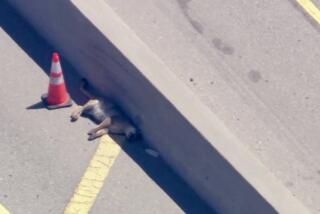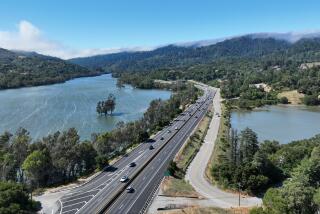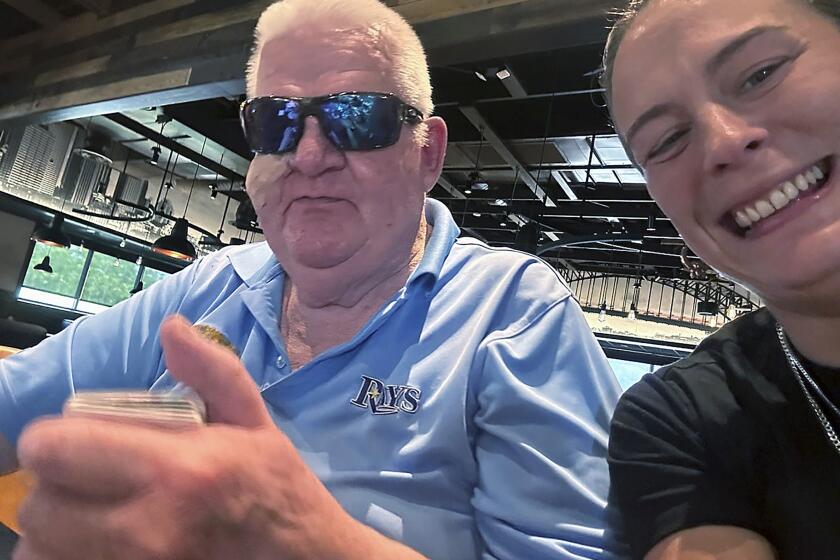Wyoming tries high-tech to prevent deer-in-the-headlight crashes
Nobody is sure why deer bound onto rural roads, offering themselves as sacrificial lambs to unsuspecting motorists and causing crashes that take lives nationwide every year.
But a Wyoming researcher, Morgan Graham, wants to find a way to prevent such crashes.
Graham, with the Conservation Research Center of Teton Science Schools, is the lead investigator in a study with the Wyoming Department of Transportation to determine whether new high-tech highway reflectors can prevent collisions between vehicles and deer.
The devices, narrow rectangular signs with red reflector strips, create a moving pattern across the road when they reflect vehicle headlights. The infrared flashes, not detectable to the human eye, are meant to discourage deer from approaching until vehicles have passed.
“The light flashes diagonally 30 feet or so on either side of the road,” Graham told the Los Angeles Times. “They’re designed to catch the attention of the animal so they stop and notice the car, as opposed to being confused and walking into the road.”
In a 2009 report, State Farm Insurance found that deer-vehicle accidents nationwide jumped 18% in the previous five years. That’s an average of one crash every 26 seconds. The average property damage was $3,050, the study found.
The report also included the percentage increase in each state between 2004 and 2009, the last statistics that are available. For example, the increase was 22% in California, 9% in Oregon, 19% in Washington, 19% in Colorado and 54% in Nebraska.
The Insurance Institute of Highway Safety reports that more than 1.5 million deer-vehicle accidents occurred in 2012, resulting in 110 human deaths, tens of thousands of injuries and $1.2 billion in property damage.
The Wyoming study is evaluating effects of the wildlife warning reflectors this winter in a nine-mile stretch north of Thermopolis, a rural area that saw 100 deer-vehicle crashes last year.
Graham said the study will help determine factors influencing collisions between wildlife and vehicles; the reflectors’ effects on collision rates; and effects on deer behavior.
“The biggest spike in accidents takes place in November during breeding season,” Graham told the Times. “With the spike in hormones, bucks making poor decisions. They’re more mobile in chasing mates. That’s true pretty much all over the country.”
ALSO:
Judge blocks NYC ban on large sugary drinks
Jury convicts ex-Detroit mayor Kwame Kilpatrick
UNLV’s ‘Hey Reb’ mascot is hanging up his big head
More to Read
Sign up for Essential California
The most important California stories and recommendations in your inbox every morning.
You may occasionally receive promotional content from the Los Angeles Times.











